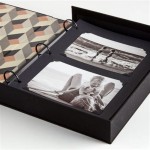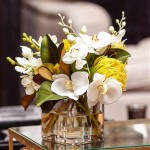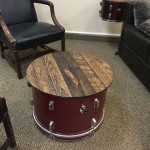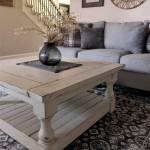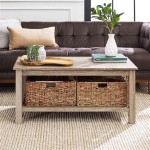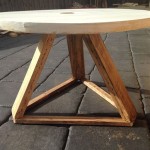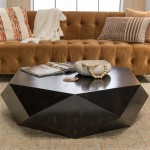How to Decorate a Side Table in a Bedroom
The side table, often referred to as a nightstand, is an essential component of bedroom furniture. It provides a convenient surface for lamps, books, electronics, and other personal items. However, its function extends beyond mere utility; a well-decorated side table contributes significantly to the overall aesthetic of the bedroom, enhancing its atmosphere and creating a more inviting and personalized space. The following article provides guidance on how to effectively decorate a side table in a bedroom, considering both practical needs and design principles.
Prioritizing Functionality
Before considering decorative elements, it’s crucial to establish the primary functions the side table will serve. Functionality should be the foundation of any successful side table arrangement. The items placed on the table must be readily accessible and relevant to nighttime or early morning routines.
The most common functional item is a lamp. The lamp provides illumination for reading, relaxing, and navigating the room in darkness. The style of the lamp should complement the bedroom's overall design, and the size should be proportionate to the side table. A lamp that is too large will overwhelm the space, while a lamp that is too small may not provide adequate light. Consider the height of the bed when selecting a lamp to ensure the light source is at an appropriate level for reading comfortably.
A clock or alarm clock is another practical necessity. While many individuals rely on smartphones for this purpose, a dedicated clock can be a visually appealing addition and eliminate the need to reach for a phone during the night. Digital clocks offer clear visibility, while analog clocks can add a classic touch. A charging station for electronic devices can also be integrated into the side table arrangement. This helps prevent cluttered cords and keeps devices within easy reach. Consider a charging station with multiple ports to accommodate phones, tablets, and other gadgets.
Storage is another area where functionality can be addressed. Many side tables incorporate drawers or shelves. Utilize these storage options to store books, magazines, reading glasses, medications, or other items that are frequently used before bed. Keeping these items within reach reduces the need to get out of bed and disrupts sleep.
Finally, consider personal necessities. A glass of water, a small notepad and pen for jotting down thoughts, or essential skincare products are items that may be useful to have readily available. By prioritizing functionality, the side table becomes a practical and convenient addition to the bedroom.
Balancing Aesthetics and Practicality
Once the functional requirements are met, the focus shifts to aesthetics. The goal is to create a visually appealing arrangement that complements the bedroom's style without sacrificing practicality. The key is to achieve a balance between decorative elements and the essential items that need to be readily accessible.
Start by establishing a color palette. The colors used on the side table should coordinate with the overall color scheme of the bedroom. This can be achieved through the use of decorative objects, such as vases, picture frames, or small sculptures. Choose colors that are calming and conducive to relaxation, such as blues, greens, or neutrals. Introducing a contrasting color can add visual interest, but it should be used sparingly to avoid overwhelming the space. The texture of items is another important consideration. Incorporating items with different textures, such as smooth glass, rough wood, or soft fabric, can add depth and visual appeal to the side table arrangement. For instance, a smooth ceramic lamp can be paired with a woven basket or a textured book cover.
Consider the scale of the objects placed on the side table. Varying the height of the items creates visual interest and prevents the arrangement from appearing too flat. This can be achieved by placing a tall lamp next to a shorter stack of books or a small decorative object. However, it is important to ensure that the tallest item does not obstruct the view or create a sense of imbalance. Layering objects is another technique that can add visual depth to the side table arrangement. Place a small picture frame in front of a larger object, or prop a book against a vase. This creates a sense of depth and dimension, making the arrangement more visually appealing. The placement of accessories is crucial. When arranging items on the side table, consider the overall composition. Grouping items in odd numbers, such as three or five, often creates a more visually appealing arrangement than grouping items in even numbers. Avoid overcrowding the side table; leave some empty space to prevent it from feeling cluttered. A small tray can be used to corral smaller items, such as jewelry or keys, preventing them from becoming scattered.
Introduce greenery. A small plant or a vase of fresh flowers can add a touch of nature to the side table and create a more inviting atmosphere. Choose a plant that is easy to care for and thrives in low light conditions, such as a succulent or a snake plant. Alternatively, a vase of fresh flowers can add a pop of color and fragrance to the room. The container used for the plant or flowers should complement the overall style of the bedroom. Personalize the space. Add a few personal touches that reflect individual tastes and interests. A framed photograph, a favorite book, or a small souvenir from a memorable trip can make the side table feel more personal and inviting. However, avoid cluttering the space with too many trinkets; choose a few meaningful items that add character without overwhelming the arrangement.
Optimizing Space and Storage
In many bedrooms, space is a premium. Optimizing the use of space and storage on the side table is essential for maintaining a clutter-free and functional environment. Consider the size of the side table in relation to the size of the bedroom. A small bedroom may benefit from a narrow side table or a floating shelf, while a larger bedroom can accommodate a more substantial piece of furniture.
Choose a side table with built-in storage options. Drawers and shelves provide a convenient place to store books, magazines, electronics, and other personal items. A side table with both drawers and shelves offers the most versatility, allowing for both concealed and visible storage. Utilize storage containers to maximize the use of space. Small baskets, boxes, or trays can be used to organize smaller items and prevent clutter. Labeling the containers can make it easier to find specific items quickly. Think vertically. If floor space is limited, consider using vertical storage solutions. A tall, narrow side table with multiple shelves can provide ample storage without taking up too much floor space. Alternatively, a wall-mounted shelf above the side table can provide additional storage space for books, picture frames, or other decorative items.
Minimize cord clutter. Electronic devices often require charging cords, which can create a tangled mess on the side table. Use cord organizers, such as clips, sleeves, or boxes, to keep cords neatly arranged and out of sight. Consider a side table with built-in cord management features, such as grommets or channels, to route cords discreetly. Keep the surface clear. While it is important to have essential items within reach, avoid overcrowding the side table with unnecessary items. Regularly declutter the surface, removing any items that are not frequently used or that contribute to a cluttered appearance. A clean and organized surface creates a more relaxing and inviting atmosphere. Consider multi-functional items. Items that serve multiple purposes can help to save space on the side table. For example, a lamp with a built-in USB charging port can eliminate the need for a separate charging station. A decorative box can be used to store jewelry or other small items while also serving as a visual accent. Maintain consistency. The side table should not be an isolated decorative island. Its design and arrangement should complement the overall style and décor of the bedroom to create a cohesive and harmonious space.
By carefully considering functionality, aesthetics, and space optimization, the side table can become a valuable and attractive addition to the bedroom, enhancing its comfort and appeal.

35 Bedside Tables For Your Bedroom S Decor Best Nightstand Inspiration

40 Bedside Table Decor Ideas To Fill That Odd Gap Bedroom Night Stands Traditional Design

How To Style Your Bedside Table

7 Stylish Bedside Table Decor Ideas Pottery Barn

Side Table Design Ideas For Bedroom Latest Designs Modern Décor Décoration Chambre De Chevet

How To Decorate A Bedside Table Snooze

The Nightstand Decor Form And Function Gold Designs

How To Decorate A Nightstand The Sommer Home

Ideas To Decorate A Bedside Tables B2c Furniture

Déco Clin D œil Bedroom Night Stands Side Table Decor
Related Posts

